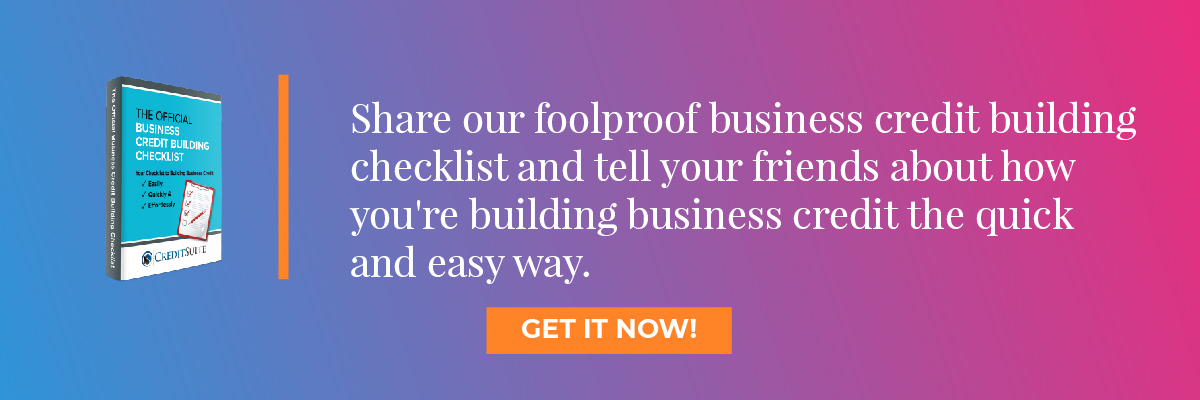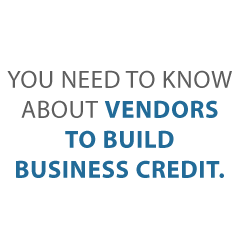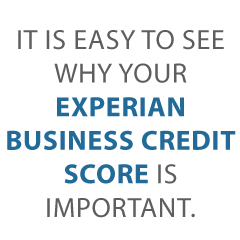
The CARES Act and COVID-19: What You Need to Know NOW
There’s a lot going on right now. So let’s look at the CARES Act Fiscal Stimulus Plan. The details are still in flux. Some may change. This information is current as of right now.
Overview of the CARES Act
Here’s an Overview of CARES. CARES stands for Coronavirus Aid, Relief, and Economic Security Act. This bill addresses economic impacts of, and otherwise responds to, the COVID-19 (coronavirus) outbreak. The bill authorizes emergency loans to distressed businesses, including air carriers and suspends certain aviation excise taxes.
With respect to small businesses, the bill establishes, and provides funding for, forgivable bridge loans; and provides additional funding for grants and technical assistance.
More Details of the CARES Act
The bill also provides funding for $1,200 tax rebates to individuals, with additional $500 payments per qualifying child. The rebate begins phasing out when incomes exceed $75,000 (or $150,000 for joint filers). The bill establishes limits on requirements for employers to provide paid leave.
With respect to taxes, the bill establishes special rules for certain tax-favored withdrawals from retirement plans; delays due dates for employer payroll taxes and estimated tax payments for corporations; and revises other provisions, including those related to losses, charitable deductions, and business interest.
The bill also authorizes the Department of the Treasury to temporarily guarantee money-market funds.
See: congress.gov/bill/116th-congress/senate-bill/3548.
Who Can Make CARES Act Loans?
Lenders with delegated authority from SBA. This lets lenders determine eligibility and creditworthiness. They can do so without going through SBA channels.
How Will Banks Evaluate Borrower Eligibility for CARES Act Funding?
The lender must consider if the borrower was in operation on February 15, 2020; and had employees for whom the borrower paid salaries and payroll taxes OR paid independent contractors, as reported on a Form 1099-MISC. The application period is February 15, 2020 to June 30, 2020.
Business Size Requirements
So any small business, non-profit, veterans’ organization, sole proprietorship or independent contractor, eligible self-employed individuals, or tribal small business concern is eligible for a loan if they employ no more than the greater of 500 employees; or if applicable, the SBA size standard for employees in the industry where the borrower operates (NAICS code).
Employees include anyone employed on full-time, part-time or other basis. For businesses with more than 1 physical location (like food services), the 500 employees can be measured per physical location.
Maximum Loan Amounts Under the Paycheck Protection Program of the CARES Act
The maximum loan amount under the Paycheck Protection Program is the lesser of 2.5 times the average total monthly payments by applicant for payroll costs incurred during one year before the date of the making of the loan. And add in outstanding amounts of any Emergency Injury Disaster Loan (EIDL) gotten on or after January 31, 2020 to be refinanced under this loan. Or $10,000,000. There are special rules for seasonal employers and businesses not in existence from 2/15/2019 to 6/30/2019.
Payroll Costs
Payroll costs include the sum of payments of any compensation for employees for salary, wage, commission, or similar compensation. They also include payment of cash tip or equivalent, and payment for vacation, parental, family, medical or sick leave. And they include allowance for dismissal or separation, and payment for the provision of group health care benefits, including insurance premiums. Plus they include payment of any retirement benefits, or payment of state or local tax assessed on the compensation of employees.
The sum of such payments cannot be more than $100,000 in 1 year, as prorated for February 15, 2020 to June 30, 2020.
Payroll costs do not include compensation of an individual employee’s in excess of an annual salary of $100,000 prorated from February 15, 2020 to June 30, 2020. And they do not include taxes imposed or withheld under FICA (Social Security and Medicare), Railroad Retirement Act, and IRC Chapter 24 (income tax at source).
Also, they don’t include any compensation of an employee whose principal place of residence is outside the US; and qualified sick leave or family leave wages where a credit is allowed under the Families First Coronavirus Response Act.
Want to review your options with one of our consultants? Give us a call at 877-600-2487.
What Can CARES Act Loans Be Used For?
Loans can be used for payroll costs and costs related to the continuation of group health care benefits during periods of paid sick, medical, or family leave, and insurance premiums. They can also be used for employee salaries, commission, or similar compensations.
You can use a loan for payments of interest on any mortgage obligation (excludes prepayment) or rent (including rent under a lease agreement). And you can use it on utilities and interest on any other debt obligation that was incurred before the period.
Good Faith Certification Requirements
So here are the Good Faith Certification Requirements.
An eligible recipient applying for a covered loan must make a good faith certification that: the uncertainty of current economic conditions makes necessary the loan request to support ongoing operations. They acknowledge that funds will be used to retain workers and maintain payroll or make mortgage payments, lease payments, and utility payments
And they certify that the eligible recipient does not have an application pending for a loan under this subsection for the same purpose and duplicative of amounts applied for or received under a covered loan.
Plus they certify that, from February 15, 2020 to December 31, 2020, the eligible recipient has not received duplicate amounts for the same purpose received under a covered loan.
Requirements and Fees
So here are the details on requirements and fees.
The SBA has no recourse against any individual shareholder, member, or partner of an eligible recipient of a covered loan for nonpayment of any covered loan unless it is used for a purpose not authorized.
From February 15, 2020 to June 30, 2020, no personal guarantee is required for the covered loan. And no collateral is required for the cover loan. Also, from February 15, 2020 to June 30, 2020, the SBA will not collect a fee.
Deferral of Payment
So here are the Deferral of Payment details.
From February 15, 2020 to June 30, 2020, there is complete payment deferment relief for impacted borrowers with a loan with terms of 6 months to 1 year. This includes payment of principal, interest, and fees. An impacted borrower is one in operation on February 15, 2020 with an application for covered loan that is approved or pending after the enactment date.
What is Covered for the Sum Paid for 8 Weeks from Loan Origination Date
So here is what is covered for the sum paid for eight weeks from the loan origination date.
Coverage includes payroll costs, and any payment of interest on any covered obligation. It also includes any indebtedness or debt instrument incurred in the ordinary course of business as a mortgage on real or personal property incurred before 2/15/2020.
And it includes any payment of rent made under a leasing agreement in force before 2/15/2020. Plus it includes any utility payment for electricity, gas, water, transportation, phone or internet access where service began before 2/15/2020.
Want to review your options with one of our consultants? Give us a call at 877-600-2487.
Documents a Borrower Must Provide
So here are the documents a borrower must provide. Provide verification of the number of full time equivalent employees on payroll and pay rates including payroll tax filings reported to the IRS and state income, payroll, and unemployment insurance filings.
Add cancelled checks, payment receipts, transcripts of accounts, and any other documents verifying payments on covered mortgages, leases, and utility payments.
And add certification from an authorized representative of the eligible recipient that the documentation presented is true and correct. Plus a certification that the amount for which forgiveness is requested was used to retain employees, make interest payments on a covered mortgage or rent obligation, or to make covered utility payments. Provide any other documentation the SBA determines is necessary. No eligible recipient shall receive forgiveness without submitting the documentation required.
CARES Act Loan Forgiveness Details
So here are the loan forgiveness details. The lender will decide on the application no later than 60 days from receiving the application. Any amount which would be includible in gross income of the eligible recipient by reason of forgiveness is excluded from gross income.
Reduction of Loan Forgiveness
There can be a reduction of loan forgiveness. A reduction can happen if there is a reduction in full time equivalent employees. So this is when comparing to the average number of FTEs per month employed by the recipient from February 15, 2019 to June 30, 2019 or January 1, 2020 to February 29, 2020.
Reductions also happen for over 25% in certain reductions in total salary or wages of any employees. These are employees who in 2019 did not receive a wage or salary at an annualized rate more than $100,000. There are special rules for tipped workers and rehires during a certain time period.
Economic Injury Disaster Loans: Which Kinds of Businesses are Eligible under the CARES Act?
SBA’s Economic Injury Disaster Loans (or working capital loans) are available to small businesses; small agricultural cooperatives; small aquaculture businesses and most private non-profit organizations.
Available businesses include businesses directly affected by the disaster. And they include businesses that offer services directly related to the businesses in the declaration. They also include other businesses indirectly related to the industry that are likely to be harmed by losses in their community.
Criteria for Loan Approval
So here are the criteria for loan approval. Applicants must have a credit history acceptable to SBA. The SBA must determine that the applicant business can repay the SBA loan. And an applicant business must be physically located in a declared county. And it must be suffering working capital losses due to the declared disaster. So this cannot be due to a downturn in the economy or other reasons.
Amounts You Can Borrow
So check out how much you can borrow. Eligible entities may qualify for loans up to $2 million. The interest rates for this disaster are 3.75% for small businesses and 2.75% for nonprofit organizations. So terms go up to 30 years. Eligibility is based on business size, type of business and its financial resources.
The SBA defines what a small business is, at sba.gov/document/support–table-size-standards.
How Can a Business Use the Loan Funds?
A business can pay fixed debts, payroll, accounts payable, and other bills that could have been paid had the disaster not occurred. But there is no intent for the loans to replace lost sales or profits or for expansion.
Want to review your options with one of our consultants? Give us a call at 877-600-2487.
Collateral Requirements
So check out the Collateral requirements. Economic Injury Disaster Loans over $25,000 will need collateral. SBA takes real estate (commercial and residential) as collateral when available. The SBA will not decline a loan for lack of collateral. But they require borrowers to pledge what is available.
Ineligible Entities Under the CARES Act
These are the ineligible entities under the act.
Agricultural Enterprises: if the primary activity of the business (including affiliates) is as defined in Section 18(b)(1) of the Small Business Act. Also ineligible are religious and charitable organizations. Plus gambling concerns if they derive more than one-third of their annual gross revenue from legal gambling activities. And casinos and racetracks, because these are businesses whose sole purpose for being is gambling. Plus real estate developers mainly subdividing real property into lots and developing it for resale on their own account.
SBA Economic Injury Disaster Loan Funds
So here are the details on the SBA’s Economic Injury Disaster Loan (EIDLs) Funds. Funds come straight from the United States Treasury. Applicants do not go through a bank to apply. They apply directly to the SBA’s Disaster Assistance Program. So you can visit disasterloan.sba.gov/ela.
There is no cost to apply. And there is no obligation to take the loan if offered. The maximum unsecured loan amount is $25,000. Applicants can have an existing SBA Disaster Loan and still qualify for an EIDL for this disaster. But you cannot consolidate the loans.
You can apply online. Applicants may apply online using the Electronic Loan Application (ELA). Visit disasterloan.sba.gov/ela. you can download paper loan applications at sba.gov/disaster.
Mail completed applications to:
US Small Business Administration
Processing and Disbursement Center
14925 Kingsport Road
Fort Worth, TX 76155
Get Disaster Loan Information and Application Forms
To get disaster loan information and application forms, call the SBA’s Customer Service Center at 800-659-2955 (800-877-8339 TTY). Or email disastercustomerservice@sba.gov.
Get assistance from SBA partners. So you can get free help with reconstructing financial records, preparing financial statements, and submitting the loan application as follows. Small Business Development Centers (SBDCs); SCORE; and Women’s Business Centers (WBC). For the nearest office: visit sba.gov/local-assistance.
Takeaways
Keep in mind, the CARES Act is still a bit in flux. But the details are probably not going to change much. The gist of it is to help small businesses during 2020. Most of the deadlines are in June, so apply NOW. Contact us today to learn more about the CARES Act and COVID-19: what you need to know.
The post The CARES Act and COVID-19: What You Need to Know NOW appeared first on Credit Suite.















